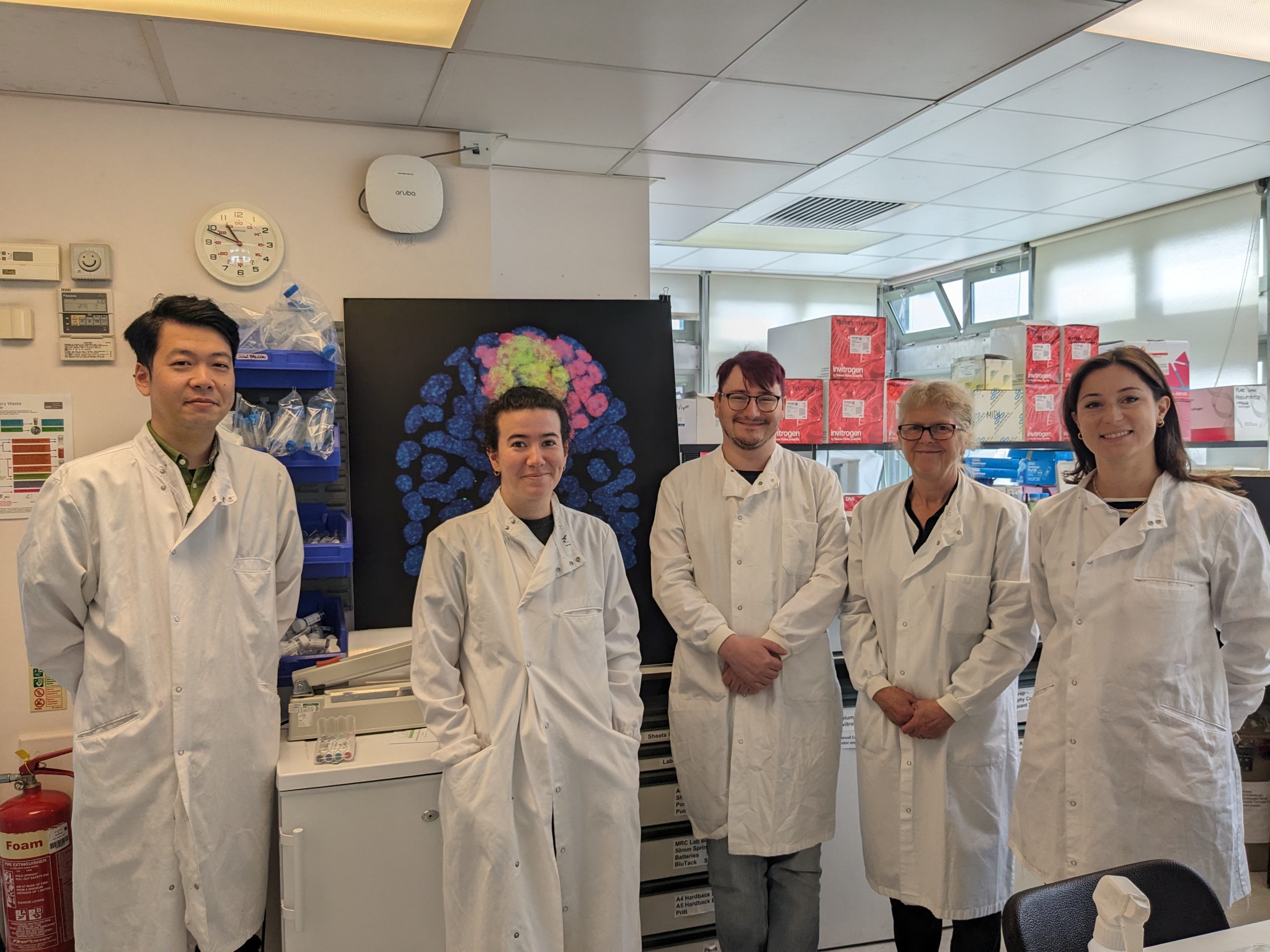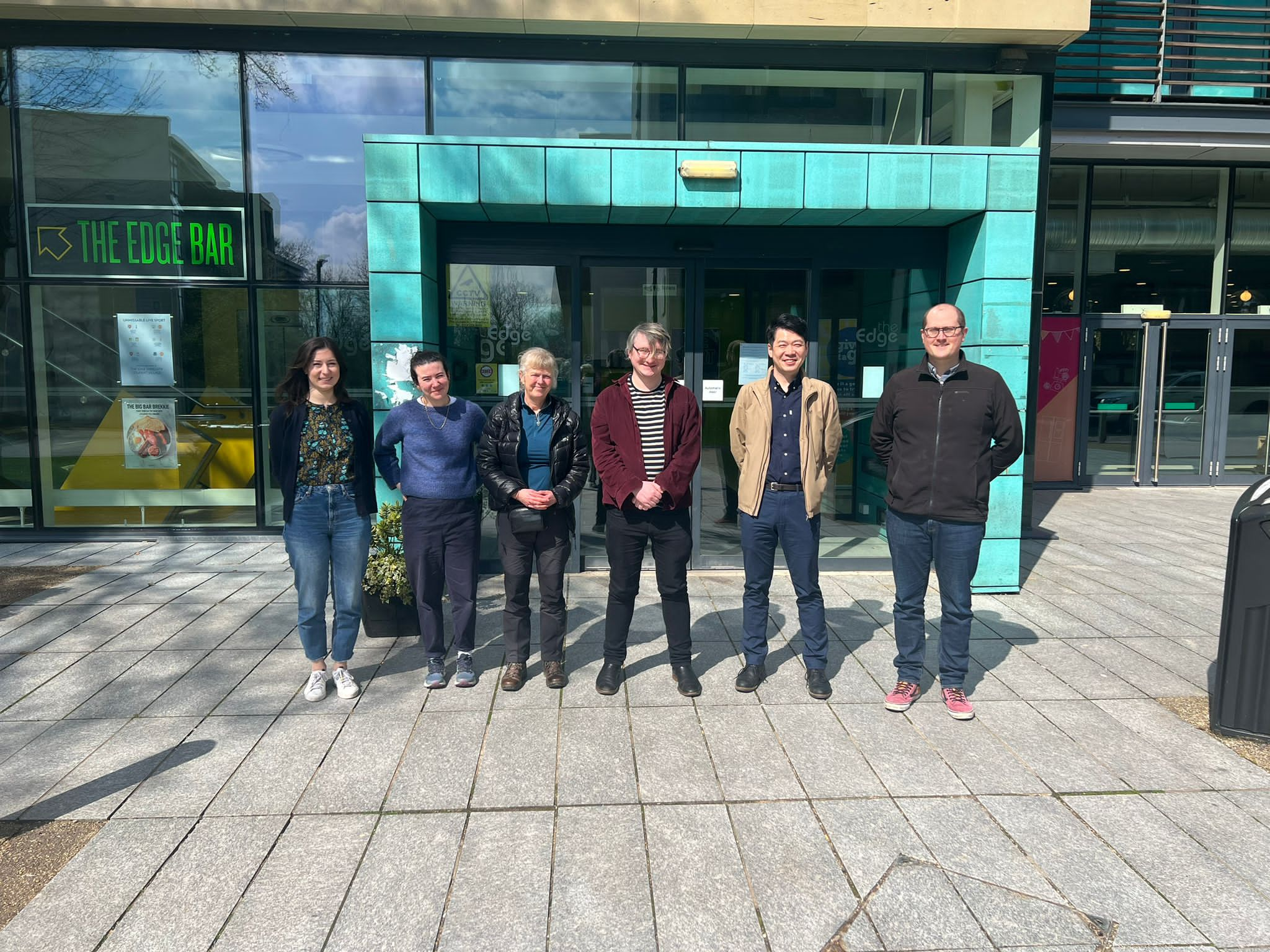Lab meeting with the Nichols Lab
Posted by the Node, on 24 August 2023
Where is the lab?
We are based in the MRC Human Genetics Unit in the Institute for Genetics and Cancer at the University of Edinburgh. It is close to the Stockbridge neighbourhood with lovely views over the city and surrounding countryside.
Lab website: Jenny Nichols Research Group | The University of Edinburgh
Research summary
We are interested in early mammalian development, using mouse and human as model systems. We have a particular focus on preimplantation cell lineage acquisition and gastrulation, also specialising in derivation and use of stem cell lines from both species.

Can you give us a lab roll call, with a sentence including what each person works on and career stage
Jenny: PI.
Elena: Postdoctoral research associate, in collaboration with Kevin Chalut; investigating the role of the mechanical microenvironment and signalling mechanisms during cell lineage specification in pre-implantation mammalian embryos
Takuya: Postdoctoral research associate; investigating the role of Stat3 signalling in the gastrulation stage of mouse development using embryos and stem cell derived ‘gastruloids’.
Lawrence: Postdoctoral research associate, studying events in gastrulation, integrating signalling and transcriptional networks.
Kasia: Edinburgh Clinical Academic Track PhD student, co-supervised by Jenny and Hannah Long. I’m a plastic surgery trainee interested in developmental biology and genetics. I am particularly focused on the role of neural crest in cranio-facial and appendage development using stem cell derived models. I’m using SOX9 gene as a model locus to understand the impact of coding and non-coding mutations in human disease.
Favourite technique, and why?
Jenny: Blastocyst injection is my favourite technique. Apart from being a useful tool for testing stem cell potency and generating mutant mouse lines, it allows us to address interesting questions, such as cell competition in the primary lineages and early post-implantation embryo. In collaboration with Bertie Gottgens’ lab in Cambridge we have been using single cell chimera-seq as a powerful technique to study the function of genes that would result in early embryonic lethality in complete knock-outs.
Apart from your own research, what are you most excited about in developmental and stem cell biology?
Jenny: I am fascinated by the potential to replicate specific organ units from stem cells using quite basic culture regimes and no obvious directional cues. These are invaluable for scrutinising developmental mechanisms in a 3Rs compliant manner and have obvious translatable value.
How do you approach managing your group and all the different tasks required in your job?
Jenny: I see myself more as a facilitator than manager. I am fortunate to have a small lab of highly motivated young scientists inspired by their particular interests. In between all the admin tasks, I like to work in the lab beside my team. I provide them with a coffee machine and unlimited refills, and the door is always open for discussions.
What is the best thing about where you work?
Jenny: It is a very friendly and welcoming environment, and there are lots of opportunities to attend seminars to hear about the work of our colleagues. Edinburgh University as a whole also has a great developmental biology community with plenty of seminars.
Elena: Microscopes and machines to fabricate our own glass tools! We moved to the HGU recently and our lab neighbours – the Mill lab – have been incredibly helpful and welcoming to us, not only scientifically but also with baked goods!
Takuya: Technical staff, especially FACS, microscopy and image analysis.
Lawrence: There’s a great social community in our institute.
Kasia: I enjoy the collaborative and interdisciplinary environment in the institute. It’s interesting to interact and learn from scientists coming from a variety of different backgrounds. Core facilities are approachable and helpful.
What’s there to do outside of the lab?
Jenny: It is lovely to walk in the local hills, highlands or along the coast. There is also plenty of culture to enjoy in Edinburgh throughout the year, especially music.
Elena: Take a bus to the south of the city and enjoy a hike in the Pentland Hills! Closer to the HGU are the old railway paths with no cars and surrounded by trees, they take you to Haymarket, Wardie Bay and Leith, I normally use them to run home after work.
Takuya: I enjoy visiting the Highland area of Scotland and the distilleries.
Lawrence: I was thrilled to find places that serve a really good coffee!
Kasia: Edinburgh is a great place to live with access to amazing restaurants, famous theatre and comedy festival and many tourist attractions. I particularly enjoy yoga and doing sports with my kids. We’ve recently discovered a junior parkrun for kids and parents in our local park.

Browse through other ‘Lab meeting’ posts featuring developmental and stem cell biology labs around the world.


 (No Ratings Yet)
(No Ratings Yet)